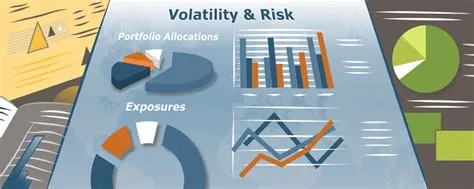Hey there! Let’s talk about two things that are kind of like riding a rollercoaster – mental fitness apps and the wild swings of micro-investing-risks">micro-investing-platforms">micro-investing-basics">micro-investing. Both can be incredibly rewarding, but they also come with their share of ups and downs. Think of it like this: mental fitness is building your emotional muscles, while micro-investing is testing your financial stamina. Both require a level of understanding and preparation to navigate successfully.
Mental Fitness Apps: Your Pocket-Sized Therapist?
Remember those days when self-care meant a luxurious bubble bath and a good book? Well, times have changed. Now, self-care often involves swiping through an app, choosing a meditation, or tackling a mindfulness exercise. Mental fitness apps have exploded in popularity, offering a range of tools to help us manage stress, anxiety, and even depression. But are they all they’re cracked up to be? Let’s dive in.
The Good, the Bad, and the Slightly Buggy
The beauty of these apps lies in their accessibility. Need a quick anxiety-busting technique? Many apps offer guided meditations or breathing exercises you can do in just a few minutes, wherever you are. Feeling overwhelmed? Some apps provide journaling prompts or mood trackers to help you process your emotions. It’s like having a pocket-sized therapist, available 24/7. But it’s not quite that simple.
One potential downside is the gamification of mental health. While rewarding systems can be motivating, they can also create unhealthy expectations. Are you really “failing” if you miss a day of meditation? The pressure to maintain a perfect streak can actually increase stress. It’s crucial to remember that mental health isn’t a game with winners and losers. It’s a journey of self-discovery and acceptance.
Another point to consider is the lack of personalization. While many apps offer a variety of tools, they often lack the tailored approach of a professional therapist. They’re a great supplement to therapy, but not a replacement. Think of them as helpful guides, not miracle cures. And just like any app, they can have bugs or glitches. It’s always good to check reviews before committing your time and, potentially, your money.
Choosing the Right App for You
So, how do you choose the right app amidst the sea of options? Consider your needs and goals. Are you looking for help with stress management, sleep improvement, or something more specific? Read reviews carefully, paying attention to user experiences. Consider the app’s features and user interface – does it feel intuitive and easy to use? And remember, not all apps are created equal. Some may offer a free version with limited features, while others require a subscription. Choose an app that fits your budget and lifestyle.
Don’t be afraid to experiment! Try a few different apps before settling on one that you feel truly connects with you. It’s like trying on different shoes – you need to find the ones that fit you comfortably.
Micro-Investing Volatility: A Rollercoaster Ride for Your Portfolio
Now, let’s shift gears to the exciting (and sometimes terrifying) world of micro-investing. This is where you invest small amounts of money regularly, often through apps that make the process incredibly simple. It’s a fantastic way to start investing, even if you only have a few dollars to spare. But, like a rollercoaster, it can be a wild ride.
The Allure of Micro-Investing
The beauty of micro-investing lies in its accessibility and ease of use. Many apps automate the investment process, making it incredibly simple to contribute small amounts of money regularly. It’s the perfect solution for beginners who are intimidated by traditional investment methods. Plus, the power of compounding means that even small contributions can add up over time. It’s like planting a small seed that slowly grows into a mighty tree.
Volatility: The Wild Card
However, the ease of micro-investing also comes with a significant caveat: volatility. Since you’re likely investing in stocks or other assets that fluctuate in value, you need to be prepared for periods of significant ups and downs. This is where the analogy of a rollercoaster really comes into play. One day your portfolio might be soaring, the next it could be plummeting. It can be an emotional experience, especially for those new to investing.
This volatility is amplified by the fact that micro-investing platforms often promote fractional-shares-basics">fractional-shares-and-wealth-building">fractional-share-platforms">fractional shares, which are portions of a whole share. This reduces the minimum investment needed, but this comes at the expense of a greater potential for volatility. When markets are volatile your investment may fluctuate more significantly than if you had invested in a traditional fund.
Managing the Rollercoaster
So, how do you navigate the volatility of micro-investing? The first step is to understand your risk tolerance. Are you comfortable with potentially losing some of your investment in the short term? If not, you might consider a more conservative investment strategy. Diversification is key. Don’t put all your eggs in one basket. Spread your investments across different asset classes to reduce your overall risk.
Another crucial aspect is patience. Micro-investing is a long-term game. Don’t panic sell when the market dips. Instead, focus on your long-term financial goals. Think of it as a marathon, not a sprint. It’s about the overall journey rather than the short-term ups and downs.
The Importance of Research
Before you dive headfirst into micro-investing, do your research. Understand the fees associated with the platform, the investment options available, and the risks involved. Don’t just rely on the marketing materials. Read independent reviews and compare different platforms before making a decision. It’s like buying a car – you wouldn’t buy the first one you see without doing some homework, would you?
The Connection: Mental Fitness and Financial Fitness
Interestingly, mental fitness and financial fitness are intertwined. The volatility of micro-investing can be stressful, and managing that stress requires mental strength. Similarly, managing your mental health can improve your decision-making capabilities, particularly in regards to investment choices. Both aspects require discipline, patience, and a long-term perspective. They’re two sides of the same coin – achieving overall well-being.
Conclusion
Both mental fitness apps and micro-investing offer incredible potential, but they come with their challenges. Understanding their limitations and navigating their volatility requires a mindful approach, a touch of patience, and a dash of self-awareness. Remember, it’s a journey, not a race. Take your time, do your research, and don’t be afraid to seek guidance when needed. Whether it’s a therapist for your mental health or a financial advisor for your investments, external support can be incredibly valuable.
FAQs
1. Are mental fitness apps a replacement for therapy? No, mental fitness apps are a supplement, not a replacement for professional therapy. They can be helpful tools, but they don’t provide the personalized support and expertise of a trained therapist.
2. How much does micro-investing cost? The cost of micro-investing varies depending on the platform. Some platforms charge fees based on the amount invested, while others have monthly or annual subscription fees. It’s crucial to compare fees before selecting a platform.
3. What if I lose money in micro-investing? Losses are a possibility with any investment. Micro-investing is no exception. It’s crucial to only invest what you can afford to lose and diversify your investments to mitigate risk.
4. How can I find a mental fitness app that suits my needs? Read reviews, consider your specific needs (stress management, sleep improvement, etc.), and try out a few different apps before committing to one.
5. Is micro-investing suitable for everyone? Micro-investing is generally accessible to most people, but it’s crucial to understand the risks involved and only invest what you can afford to lose. It might not be suitable for those with a low risk tolerance.

